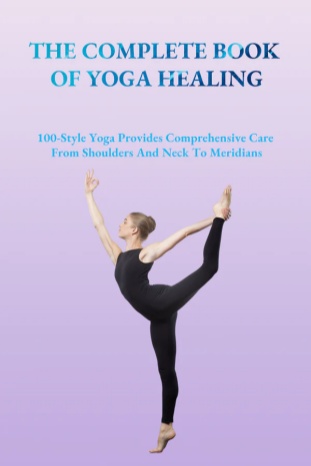Zen Meditationin Daily Life: Finding Stillness in Every Action
 1. Unifying Body and Mind
1. Unifying Body and Mind
Where the body is, the mind should also be; whatever the body is doing, the mind should be doing as well. If the hands are busy or the feet are moving, your mind should be fully present in that action—body and mind cannot be separated. For example:
- When boiling water, fetching water, picking vegetables, chopping, or washing them in the kitchen, the mind should be fully engaged in the movement, without being distracted by other thoughts.
- When stir-frying, the hands are moving, and the mind should be focused solely on the act of cooking—free from any wandering thoughts.
- When feeding a child food or drinks, focus wholeheartedly on this act. Let body and mind be unified, speech and intention aligned—no other thoughts interfering. Your mind will feel clear, light, and joyful.
First, make a plan and know what needs to be done. If you are already performing planned tasks, especially routine actions such as rinsing your mouth, brushing teeth, shaving, washing your face, or getting dressed—which you’ve done countless times—there’s no need to overthink. Just carry them out clearly and attentively. However, for tasks that require thinking, do give them your full mental attention. For things that don’t require thought, let them unfold naturally.
Often, people tend to let their minds wander during habitual actions. This is unnecessary. Just stay aware of what you are doing. For example, when sweeping the floor, focus entirely on the sweeping motion. Washing dishes, eating, and cleaning should be done with the same clarity and presence.
But when dealing with unfamiliar tasks or actions, thinking is necessary—before and during the action—until you gain clarity. This will prevent scattered thoughts and allow you to work with one-pointed focus.
Take this example: a mother cuts a flower and ponders where to place it, then gently arranges it in a vase. Throughout the process, her mind is not scattered. This is a state of mindfulness. On the other hand, if she is too familiar with the process, she might start thinking: “What is my child doing over there? Why is he so quiet? What’s going on? Oh, now he’s moving. Why are his footsteps so loud?” These are stray thoughts. Hence, for any task, keep your mind on it. Let your mind act for that task—this is right mindfulness, not delusion.
Thus, we must constantly maintain unity between the actions of the body and the thoughts of the mind.
2. Aligning Speech and Mind
Let your speech reflect your mind. For example, if I am talking and my mind is elsewhere, I will end up speaking incoherently. This happens because my words and my thoughts are disconnected.
Say what you mean, and only that—be fully aware of what you’re expressing. Once a sentence is complete, the next one will naturally emerge. Before speaking, consider what needs to be said. Don’t just blurt out thoughts; that’s meaningless chatter. When people speak just for the sake of speaking, without knowing what they are saying, they fall into delusion.
True alignment of speech and mind means knowing exactly what you’re going to say, and expressing it clearly. A practitioner of Zen must be fully aware of their speech and bodily actions. This awareness prevents mistakes and harmful words.
3. Letting the Eyes Reflect the Mind
A person lost in thought can be seen through their eyes—eyes that dart around, without focus or direction. Though they may seem to be looking at everything, their gaze lacks a clear object. They don’t even know why they are looking—because their thoughts are swirling inside.
Therefore, you can observe someone’s mental clarity by watching their gaze. In daily life, take full responsibility for every action. Walk carefully, step by step. Speak with awareness, word by word. Every movement should be grounded and intentional—not chaotic or distracted.
When body and mind are unified, and speech aligns with the mind, there will be fewer delusions and more mindfulness. With this, wisdom grows. When wisdom arises, suffering and confusion diminish.
Only a stable mind can reduce afflictions. Practice unifying body and mind, aligning speech and thought, and your internal disturbances will gradually lessen. When external circumstances arise to disturb you, observe: What is your mind thinking? What are your eyes seeing? What are your ears hearing?
Paying attention to your seeing, hearing, and thoughts in this way, afflictions cannot arise. For example, if someone punches you, and you focus on the action and your bodily sensation, you won’t feel offended. If someone scolds you and you clearly hear the words and acknowledge they are directed at you—yet without letting your mind react—you remain untroubled.
But if your mind starts to stir: “Why did he scold me? Why did he hit me?”—then afflictions arise, because your attention has shifted outward. Instead, if you remain focused on your inner thoughts and feelings with clarity, suffering will not take root.
Conclusion:
Zen is not merely about sitting on a cushion in silent meditation—it is a way of living with moment-to-moment awareness and clarity. Can we remain fully present while brushing our teeth, eating, caring for children, or working?
Can we, in a single thought, discern between distraction and mindfulness, and choose to respond consciously rather than habitually?
Life’s small tasks never cease, and yet the opportunity to awaken is always present.
Are you willing, from this moment on, to practice focus, to truly see yourself,
and to turn everyday routines into sacred ground—where the mind can find peace in every little act?
Have you ever tried bringing Zen into your daily life?
Feel free to share your experiences or questions—let us walk this path of awareness and inner stillness together.
? Note: This article is excerpted from the collected works of Master Sheng Yen.
If you’re interested in the practice of Zen in everyday life, we encourage you to explore more of Master Sheng Yen’s writings. His words offer gentle guidance on how to stay clear and grounded in a noisy world.
You’re welcome to download it – it’s all yours!
- The Fundamental Practice of Zen Meditation Zazen
- Zen Meditation: Through meditation, one can bring inner peace and reduce anxiety and distress in life.
- Getting The Buddha Mind : Zen Meditation Handbook for Realizing Buddha Nature
- Ox Herding at Morgan’s Bay: The Ten Stages of Mental Development in Meditation
- A Pure Land on Earth: Meditation purifies the mind, fills the world with love, and brings about world peace.
May we return to the present moment with mindfulness, again and again.
Keep exploring more inspiring content to enrich your mind and spark new insights:
- Let Go of Their Lessons, Walk Your Own Path
- Top Meditation Techniques for Better Sleep
- The Five Types of Negative Energy in Parents That Weigh Most Heavily on Their Children
- How Can We Keep All Relationships at Their Best?
- Understanding the Benefits of Journaling for Emotional Health
- Creating a Relaxation Space at Home: Tips and Ideas
- Wake Up to Yourself : The Key to Happiness and Self-Improvement
- How to Manage Emotional Overload in a Stressful World by Meditation
- 4 Mindfulness Techniques to Help Break the Cycle of Negative Emotions
- Choosing Complain: A Path to Life Ruins
- Mindful Breathing Exercises to Lower Blood Pressure Naturally
- The Science of Mindfulness: How It Impacts Emotional Health
- How Do Meditation and Mindfulness Practices Differ, and How Do They Affect Mental and Physical Health?
- Meditation and Health: 10 Minutes a Day Can Change Your Life







